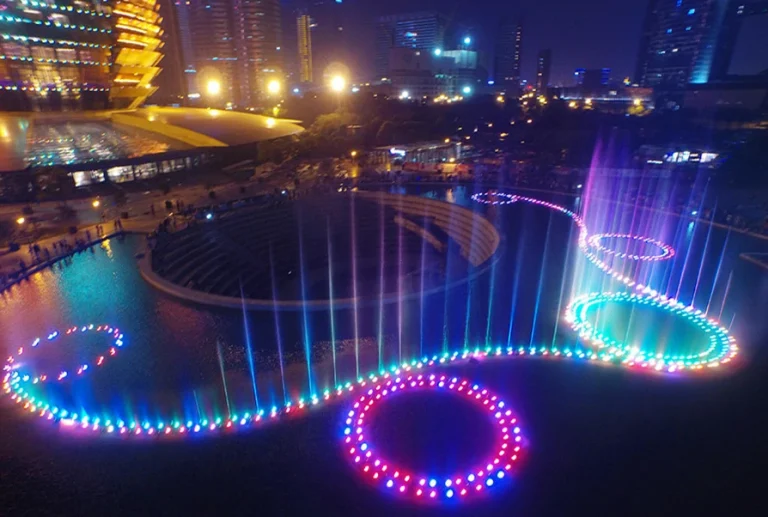How to Construct a Musical Fountain to Attract Tourists
Creating a musical fountain can transform any public space into a mesmerizing attraction, drawing tourists from near and far. Combining the visual splendor of water choreography with the emotive power of music, a well-designed musical fountain can become a landmark in its own right. Here’s a comprehensive guide on how to construct a musical fountain that captivates and delights visitors.
Step 1: Planning and Design
1.1 Define Objectives and Budget
Start by clarifying your goals. Are you looking to create a tranquil oasis, a dramatic showpiece, or an interactive feature? Define the target audience and the kind of experience you want to offer. This will guide your design and budget decisions.
1.2 Select a Location
Choose a strategic location that’s easily accessible and has high foot traffic. Consider visibility, surrounding landscape, and proximity to other attractions. Ensure there’s enough space for spectators to gather without causing congestion.
1.3 Conceptual Design
Work with landscape architects and water feature designers to create a conceptual design. This should include:
Fountain Shape and Structure: Decide on the shape (circular, rectangular, free-form) and the materials (concrete, stainless steel, natural stone).
Water Patterns: Plan the types of jets and nozzles to create various effects such as vertical jets, mist, and water arches.
Music Selection: Choose a diverse playlist that suits different moods and times of day, from classical pieces to contemporary hits.
Step 2: Technical Specifications
2.1 Water and Pump Systems
Install a reliable water circulation system. This includes pumps, filtration systems, and reservoirs. Ensure the system can handle the volume of water needed for the desired effects and operates efficiently.
2.2 Lighting and Sound
Integrate LED lights that can change colors and patterns in sync with the music. The sound system should provide clear, powerful audio that complements the water display without overpowering it. Waterproof and weather-resistant equipment is essential.
2.3 Control Systems
The heart of a musical fountain is its control system. Invest in a sophisticated computer system that can synchronize water jets, lights, and music. Programmable Logic Controllers (PLCs) and software like DMX (Digital Multiplex) are commonly used for precise control.
Step 3: Construction and Installation
3.1 Site Preparation
Clear the site and lay the foundation. Ensure proper drainage to prevent waterlogging. Construct the main basin and any supporting structures, adhering to the design specifications.
3.2 Equipment Installation
Install the plumbing, pumps, and filtration systems first. Follow with the lighting and sound equipment. Finally, set up the control system and ensure all components are connected correctly.
3.3 Testing and Calibration
Conduct thorough testing to fine-tune the synchronization of water, lights, and music. Adjust the water pressure, jet angles, and lighting sequences until the desired effect is achieved. This phase may require several iterations.
Step 4: Launch and Maintenance
4.1 Soft Launch
Before the grand opening, conduct a soft launch to test the system in a live environment. Gather feedback and make any necessary adjustments.
4.2 Marketing and Promotion
Promote the musical fountain through social media, local media, and tourism websites. Organize an opening event to attract attention and create buzz.
4.3 Regular Maintenance
Establish a maintenance schedule to keep the fountain in top condition. Regularly clean filters, check pumps and lighting, and update the control software. Seasonal adjustments may be needed to account for weather changes.
Step 5: Enhancing the Experience
5.1 Interactive Features
Consider adding interactive elements such as water jets that react to movement or touch, creating a playful experience for visitors.
5.2 Themed Shows
Create themed shows for holidays, local events, or special occasions. This keeps the attraction fresh and encourages repeat visits.
5.3 Complementary Amenities
Enhance the area around the fountain with seating, landscaping, and food vendors. This creates a more inviting atmosphere and encourages visitors to linger.
Conclusion
Constructing a musical fountain is a significant investment, but the payoff can be substantial in terms of tourist attraction and community enjoyment. By following these steps and focusing on quality design and technology, you can create a captivating water feature that becomes a highlight of your locale. Whether it’s for a city park, a hotel, or a shopping center, a musical fountain can provide a magical experience that leaves a lasting impression on all who see it.

